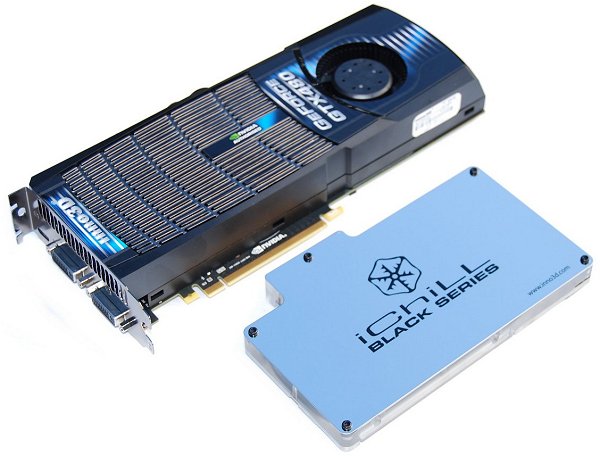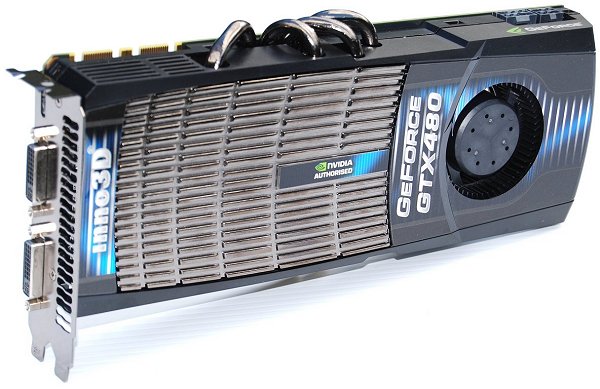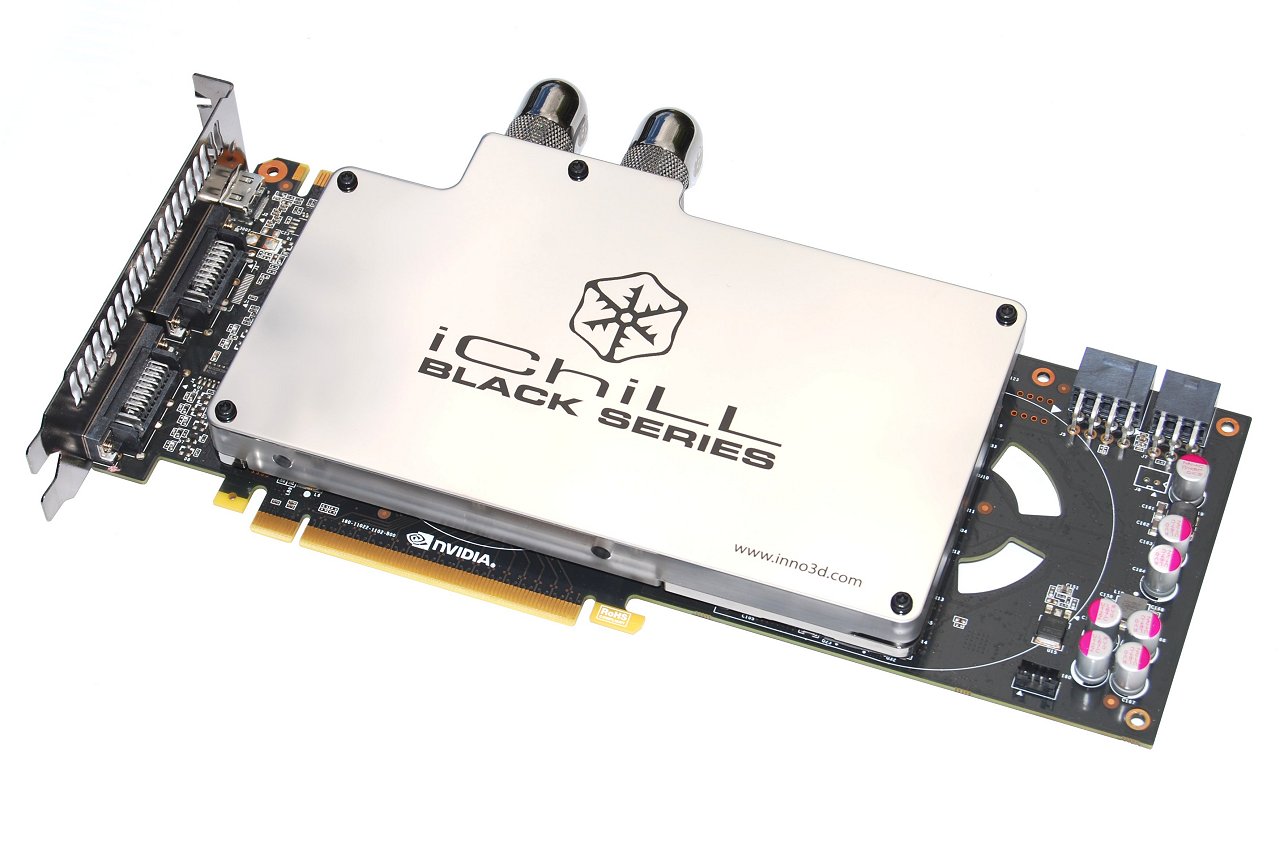Inno3D GTX 480 iChill Black Series in Detail
With an estimated retail price of $499 its intentions are quite clear, the GeForce GTX 480 was designed for gaming performance. At this price point the card is anywhere from $70 to $100 more expensive than the Radeon HD 5870 and as much as $200 cheaper than the dual-GPU Radeon HD 5970.



Based on the Fermi third-generation Streaming Multiprocessor (SM) architecture, the GeForce GTX 480 boasts 480 CUDA cores, twice the shader power of the GT200 architecture used by the GeForce GTX 280.
Not only has the number of cores doubled, but so have the number of ROP (Raster Operations) units with 48 total. 8x MSAA performance has been optimized through enhanced ROP compression and texture units are also said to have been redesigned for improved efficiency and better real-world performance. In total, there are 60 of them.

Breaking it down, the GeForce GTX 480 features 4 Graphic Processing Clusters, 15 Streaming Multiprocessors, 480 CUDA Cores, 60 Texture Units and 48 Raster Operations Units. The graphics clock speed for fixed function units is 700MHz, while the CUDA cores operate at a more aggressive 1401MHz. Inno3D has boosted the clock speed for fixed function operating frequency to just 720MHz, while the CUDA cores now work at 1440MHz.


The GTX 480 GPU is teamed with 1536MB of GDDR5 memory clocked at 924MHz (3696MHz DDR). Again, Inno3D has overclocked the memory by a very small percent. The frequency has been increased to 950MHz, a mere 26MHz above spec. Using a 384-bit memory interface, the end result is a peak theoretical bandwidth of 177.4GB/s or 15% more bandwidth than the Radeon HD 5870 and 12% more than the GeForce GTX 285.


All this horsepower adds up for a Thermal Design Power (TDP) of a staggering 250 watts, which is 33% greater than that of the Radeon HD 5870, and 23% greater than the GeForce GTX 285. Perhaps the most amazing thing about these figures is that the TDP of the GeForce GTX 480 is just 15% lower than that of the mighty Radeon HD 5970.
This makes overclocking the GeForce GTX 480 a real problem, as the design is already pushing the huge air cooler to its limits. Therefore Inno3D has employed a water-cooled solution to help keep the GeForce GTX 480 cool when operating at higher frequencies. Measuring 18cm long and 10.5cm wide, the water-block covers the GPU, VRM and RAM, providing a complete cooling solution for the Inno3D GTX480 iChill Black Series.

Other than the PCI Express slot, the GeForce GTX 480 draws in power though a pair of external PCI Express power connectors. The GTX 480 requires a 6-pin and an 8-pin connector and Nvidia recommends using at least a 600-watt power supply with this card. Inno3D has not changed the Nvidia PCB design in any way, shape, or form, so specs are left intact as well.
Unlike other high-end "special edition" graphics cards we know, such as the MSI R5870 Lightning, the Inno3D GTX 480 iChill Black Series only features a modified cooler. The physical graphics card is standard, and there is no add-in software included to further overclock the GTX 480 iChill Black Series. Not that we expect this to stop anyone, but we found it worth mentioning.
